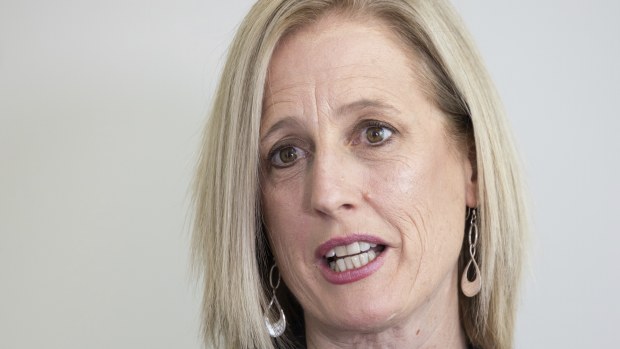Ministers ready national digital identity scheme
A plan to kickstart the deployment of a national digital identity regime is to be presented by Finance Minister Katy Gallagher to state and federal digital ministers by the end of the month.
Until now, only the federal government identity provider myGovID can access the national system, leaving the states and territories and private identity providers frustrated at the slow progress in making the national system work for everyone.
The push to accelerate the rollout of legislation for the much awaited federated scheme comes after a review of the myGov service portal by former Telstra and IBM chief David Thodey called for the new identity system to be urgently implemented.
This followed data breaches at Optus and Medibank last year which exposed the need for a national identity system, so firms and public agencies did not have to hold sensitive personal identity data.

Finance Minister Katy Gallagher is to take her plan to kickstart a new national digital identity system to state ministers next week. Alex Ellinghausen
The Australian Institute of Criminology has estimated the lack of a secure identity regime meant identity fraud was costing $3.1 billion a year. That was before COVID-19 spurred a rash of scams and identity theft.
Senator Gallagher has responsibility for data and digital issues for the Commonwealth government. Through a spokeswoman, the minister said she “welcomed the recommendation for an acceleration of the nation’s digital ID program and prioritisation of security and privacy”.
“Through a digital ID and myGov, Australians will have an easy, secure and nationally recognised way to prove who they are once, when accessing a variety of government services online.
“The data and digital ministers meeting currently scheduled for Friday, February 24, is expected to further discuss the progression of the digital ID program.”
Under the previous federal government a Trusted Digital Identity Framework had been agreed to in-principle by all states and territories. Draft legislation was published but not taken forward.
States and private providers are now waiting for the Albanese government to re-engage on the complex regime, now known as the Australian Government Digital Identity System.
Veteran identity policymakers who have watched the glacial pace of the current proposal argue the initial primary focus should be on having a safe working national credentialthat the states as well as private players can reliably build upon.
This would allow a marketplace of identity providers to develop.
A national digital identity system will also open the way for “tell us once” applications, so people don’t have to update their credentials in multiple places. Forms will also be able to be auto-completed based on an individual’s verified identity.
It will also enable services to be linked together, making it easier to register the birth of a child or the death of a parent across multiple tiers of government.
A working national digital identity system also paves the way for co-ordinated support during emergencies and for tailored personalised services and notifications.
A number of states have been testing the new system on a pilot basis, but are waiting for key issues such as charging, who can be relied upon, and liabilities (for errors and so on), security, and data management and ownership to be resolved before formally agreeing to be part of the national system.
The identity system also needs to work with various integrity requirements, such as interacting with anti-money laundering obligations and regulators.
“We are working closely with the Commonwealth, state and territory governments to determine next steps on a digital identity framework,” Victoria’s Government Services Minister Danny Pearson said.
But amid the slow pace of deploying a national identity system, NSW and Queensland have moved to create their own digital identity credentials based around digital drivers’ licences.
Nearly four out five of NSW’s 5.6 million licence holders already have a digital driver’s licence, firmly establishing it as a de facto state identity card.
Queensland is about to undertake a second pilot in Townsville, ahead of a broader state roll out of its digital licence app later this year. The app complies with international standards, meaning Queenslanders will be able to use their digital licence around Australia and internationally.
Victoria has outsourced its licensing system, but residents can also verify their identity through Service Victoria, with a million users now enrolled. Victoria is taking a more cautious approach to data collection.
West Australia is already using the federal myGovID as its primary identity credential for access to the ServiceWA app.
The proliferation of governmental identity schemes prompted warnings from the Thodey review this could lead to fragmentation.
The framework has also been designed for private identity players to be part of the system, creating choice for users over which identity credential to use.
Mastercard, Australia Post and a consortium of payment providers working under a brand called ConnectID have developed identity verification solutions. They are keen for any new regime to be fully interoperable and flexible enough to accommodate rapidly evolving technology, such as facial recognition.
“We think it’s important going forward [to make] sure that it sets out a strong framework, but isn’t prescriptive on how to deliver that,” Connect ID managing director Andrew Black said.
This comes amid a push to upgrade from two-factor authentication, including the use of digital keys embedded in hardware that are held separate from phones.
